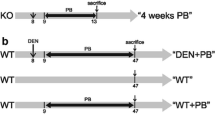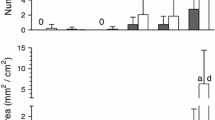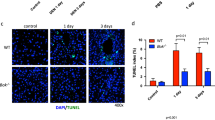Abstract
Nongenotoxic rodent hepatocarcinogens do not damage DNA but cause liver tumours in the rat and mouse, associated with the induction of hepatic DNA synthesis. Previously, we have demonstrated that nongenotoxic hepatocarcinogens such as phenobarbitone and the peroxisome proliferator (PP), nafenopin, also suppress rat hepatocyte apoptosis. The nongenotoxic chemicals 1,4-dichlorobenzene (DCB) and the PP, diethylhexyl phthalate (DEHP), both induce high levels of DNA synthesis in rat liver in vivo, but only DEHP is hepatocarcinogenic in this species. Here, we investigate whether the difference in rat carcinogenicity of these two hepatic mitogens may be due to differences in their ability to suppress hepatocyte apoptosis. In rat hepatocytes in vitro, MEHP (the active metabolite of DEHP) induced DNA synthesis 2.5-fold (P = 0.001) and suppressed 10- and 4-fold, respectively both spontaneous (P = 0.0008) and transforming growth factor β1 (TGFβ1)-induced (P = 0.0001) apoptosis. DCB gave a small (1.7-fold) increase in DNA synthesis (P = 0.03) and a small (1.7- to 2-fold) suppression of both spontaneous (P = 0.022) and TGFβ1-induced (P = 0.015) apoptosis. We next analysed the induction of DNA synthesis and the suppression of apoptosis in rat liver in vivo. Both DEHP and DCB were able to induce DNA synthesis although, as seen in vitro, the induction by DCB (4.2-fold; P = 0.023) was less marked than that with DEHP (13.4-fold; P = 0.007). Similarly, DEHP and DCB were both able to suppress rat hepatocyte apoptosis in vivo but the magnitude of the suppression was comparable; apoptosis was reduced to undetectable levels in four out of five animals with DCB and three out of five with DEHP. Since both chemicals suppressed apoptosis and induced DNA synthesis in rat liver but, overall, DCB was less potent, the disparate hepatocarcinogenic potential of these two chemicals could arise from differences in the magnitude of growth perturbation. To test this hypothesis, we repeated the studies in mouse, a species where both DCB and DEHP are hepatocarcinogenic. Both in vitro and in vivo, DCB and DEHP/MEHP were able to suppress apoptosis and induce hepatocyte DNA synthesis in the mouse with comparable potencies. The data support the hypothesis that the carcinogenicity of nongenotoxic hepatocarcinogens is associated strongly with the ability to perturb hepatocyte growth regulation. However, the ability to effect such changes is not unique to nongenotoxic carcinogens and is common to some noncarcinogenic chemicals, such as DCB, suggesting that the growth perturbation may need to exceed a threshold for carcinogenesis.
Similar content being viewed by others
Author information
Authors and Affiliations
Additional information
Received: 9 June 1998 / Accepted: 23 September 1998
Rights and permissions
About this article
Cite this article
James, N., Soames, A. & Roberts, R. Suppression of hepatocyte apoptosis and induction of DNA synthesis by the rat and mouse hepatocarcinogen diethylhexylphlathate (DEHP) and the mouse hepatocarcinogen 1,4-dichlorobenzene (DCB). Arch Toxicol 72, 784–790 (1998). https://doi.org/10.1007/s002040050574
Issue Date:
DOI: https://doi.org/10.1007/s002040050574




